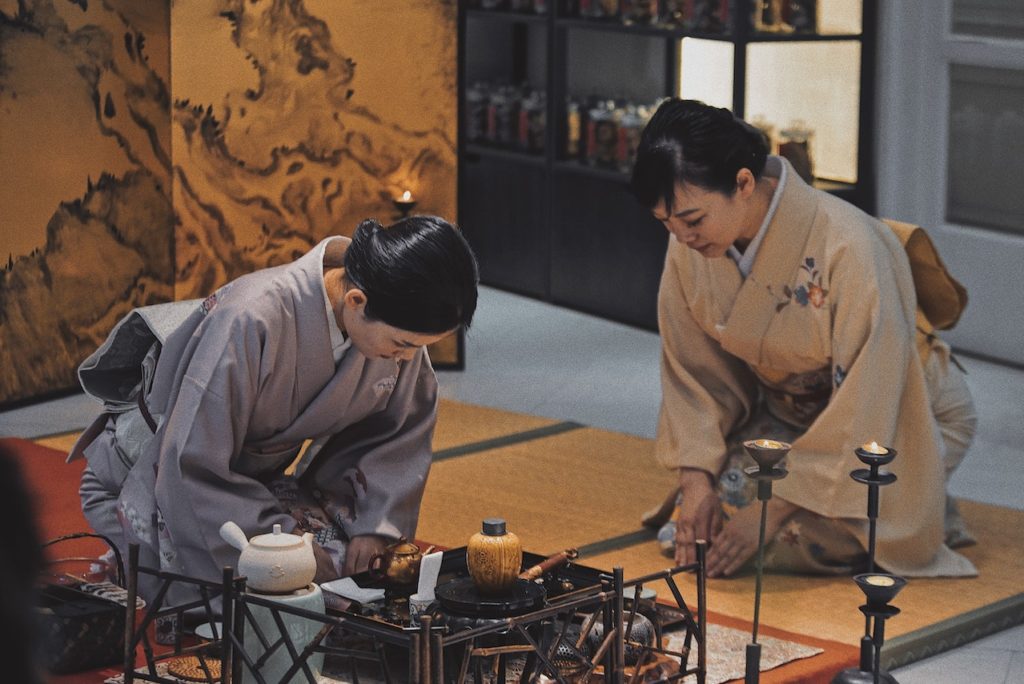Differences in Japanese Traditional Clothing
In the land of the rising sun, a symphony of rich traditions, captivating stories, and exquisite artistry unfolds through a tapestry of clothing that speaks volumes of history and culture. Japanese traditional clothing, with its delicate blend of form, function, and symbolism, is a true testament to the nation’s reverence for the past and its embrace of the present. From the iconic kimono to the less-known but equally enchanting yukata, let us embark on a journey to uncover the intricate allure of these garments and the stories they tell.
The Timeless Kimono: Weaving Threads of Heritage
At the heart of Japanese traditional clothing lies the kimono, a garment that exudes timeless elegance and carries within it centuries of culture and heritage. With its distinct T-shape, straight-line silhouette, and long flowing sleeves, the kimono is an embodiment of grace and tradition. The word “kimono” itself translates to “thing to wear,” and yet, it symbolizes so much more.
The art of creating a kimono is a delicate and meticulous process, involving skilled craftsmen who dye, weave, and embroider fabrics to transform them into works of art. The patterns and colors of a kimono often carry deep significance, reflecting the seasons, occasions, and social standing of the wearer. The intricate motifs tell tales of nature’s beauty, mythical creatures, and historical events, turning each kimono into a canvas of cultural storytelling.
The Versatile Yukata: A Breath of Summer’s Delight
While the kimono is a treasure trove of history, the yukata presents a lighter and more casual side of Japanese traditional clothing. Often referred to as the “summer kimono,” the yukata is a garment that brings with it a sense of leisure and relaxation. Its origins can be traced back to the bathing robes worn in traditional Japanese bathhouses, but it has since evolved into a fashionable piece of attire for summer festivals and casual outings.
The yukata’s charm lies in its simplicity and versatility. Made from lightweight fabrics like cotton, it features bold and vibrant designs that capture the essence of summer: fireworks, festivals, and the warm embrace of the sun. Wearing a yukata is not just about adorning the body; it’s about embracing a season, embodying a mood, and celebrating life’s simple joys.
Beyond Kimono and Yukata: Exploring Less-Known Attire
While the kimono and yukata steal the spotlight, there are other lesser-known traditional garments that deserve recognition for their unique role in Japanese culture. The hakama, for instance, is a wide-legged pant that was historically worn by samurai, symbolizing their status and strength. Today, it is often donned during formal ceremonies and martial arts events, keeping the spirit of the samurai alive in modern times.
Another intriguing piece of clothing is the hanten, a padded and quilted jacket that offers both warmth and functionality. Originally worn by firefighters, the hanten’s distinctive crossed stitching not only strengthens the fabric but also creates a visually captivating pattern. In contemporary society, the hanten has evolved into a fashion statement, with modern designs that pay homage to its historical roots.
The Thread of Modernity: How Traditional Clothing Thrives Today
The enduring appeal of these garments can be attributed to their seamless fusion of tradition and modernity. Designers and artisans are continuously finding innovative ways to reimagine traditional patterns and styles, creating pieces that are both steeped in history and relevant to the present.
Fashion shows, exhibitions, and even international runways have showcased the beauty of Japanese traditional clothing, sparking a global fascination with the intricate craftsmanship and aesthetic finesse they embody. This global interest not only honors Japan’s cultural heritage but also fosters cross-cultural connections, as people from all corners of the world come to appreciate and embrace these treasures from the past.
Preserving the Threads of Culture: Passing Down Traditions
Amidst the bustling streets of Tokyo and the serene landscapes of Kyoto, the legacy of Japanese traditional clothing lives on through dedicated craftsmen, artists, and cultural enthusiasts. Schools and workshops offer a glimpse into the art of creating these garments, passing down age-old techniques to new generations.
Furthermore, the Japanese people’s dedication to preserving their heritage extends beyond clothing, as festivals and rituals that involve wearing traditional attire continue to be cherished and celebrated. Setsubun, a festival that marks the beginning of spring, sees participants wearing beautifully adorned kimonos while throwing beans to ward off evil spirits, intertwining the past and present in a harmonious dance.

Conclusion
Japanese traditional clothing is more than just fabric and thread; it’s a living tapestry that weaves together generations, stories, and cultures. From the intricate elegance of the kimono to the carefree charm of the yukata, these garments are vessels that carry the essence of Japan’s past into the embrace of its future. As the world evolves, these threads of tradition continue to inspire, enrich, and remind us of the profound beauty that lies in the stories told through clothing.
So, the next time you find yourself in the presence of a kimono-clad figure strolling through the streets of Kyoto or watching fireworks in a vibrant yukata, take a moment to appreciate the artistry and heritage these garments embody. For within their folds, the spirit of Japan’s rich culture and history dances, forever entwined with the threads of time.
